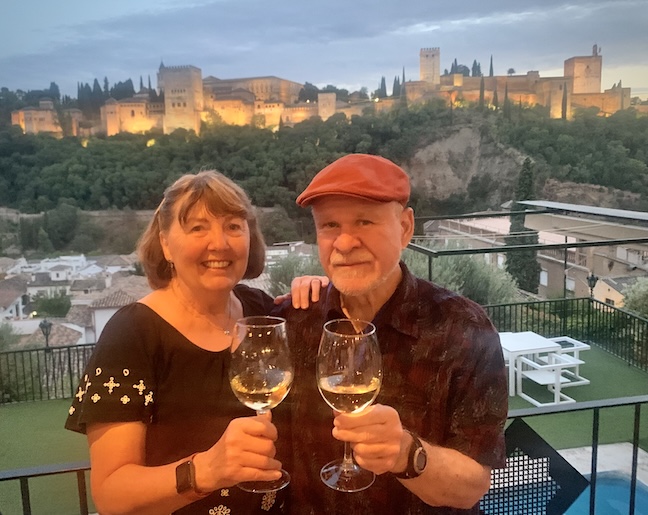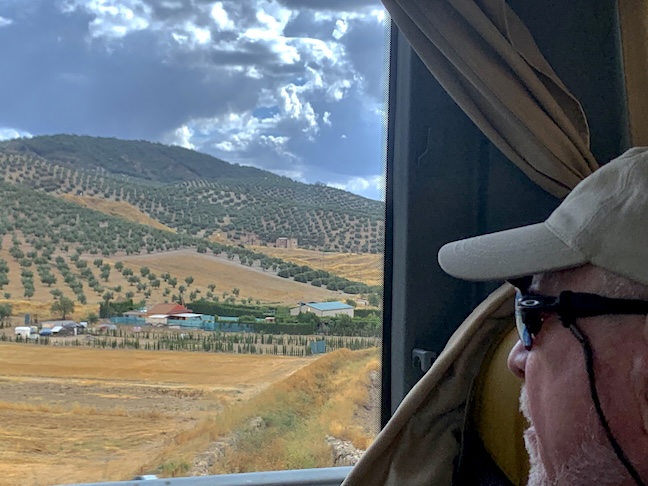
Our Rick Steve’s group travels by bus from Toledo across Spain’s largest plain. La Mancha is Arabic for “land without water.” This vast dry farming region produces cereal crops, sheep, goats, and saffron.
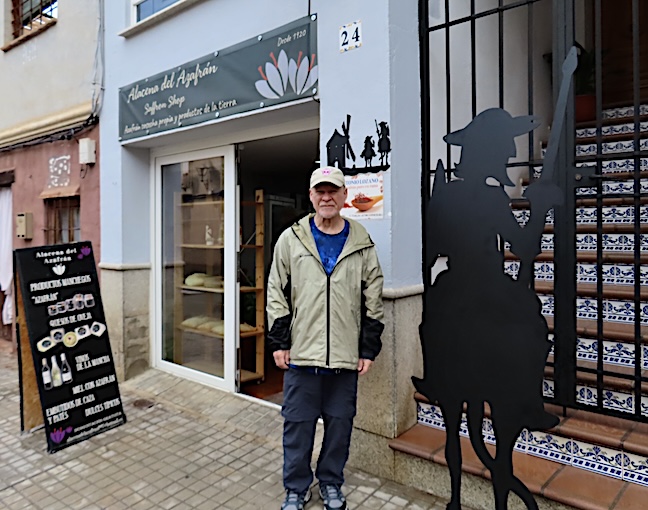
European bus drivers are supposed to take a break every two hours, which is fine with me. Our stops were designed for comfort and interest. The above Saffron shop offered samples of foods made with saffron and wine for our group. It takes 70,000 saffron flowers to make a pound of the spice, and every thread-like stigma must be pulled from the flower by hand. Saffron can range from $200 to $1,000 per ounce, making it the most expensive spice in the world.
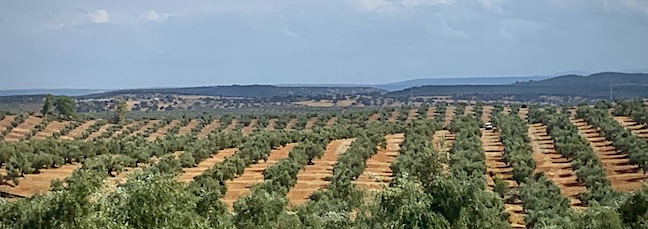
The dry climate is ideal for growing olives, especially in the Ciudad Real and Toledo regions of La Mancha.
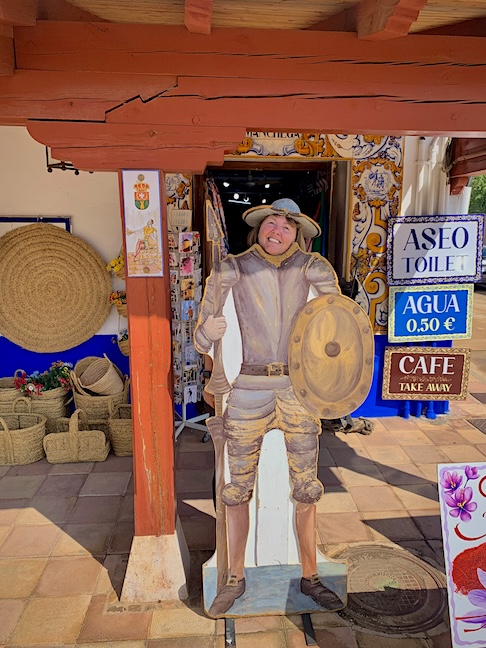
For lunch, we stopped at a traditional roadside cafe called a Venta. Unlike tourist restaurants, Spanish families eat here. The prices are half what conventional eateries charge, the food is hearty, portions are generous, and the house wine is excellent. The atmosphere is relaxed, noisy, and fun.
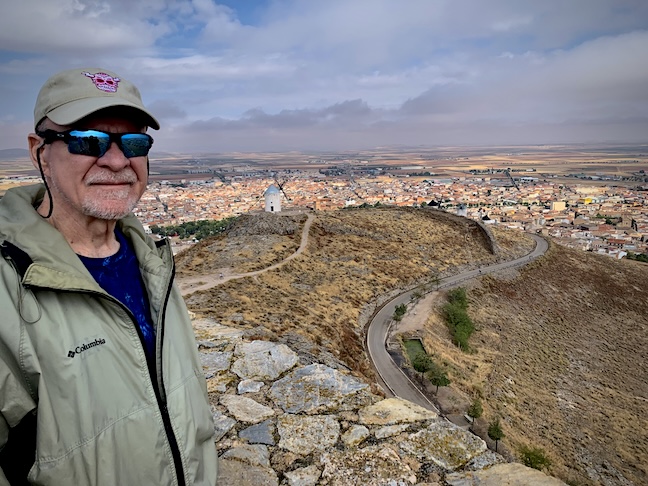
Atop Calderico Hill in La Mancha, twelve windmills and a huge fort have been preserved.
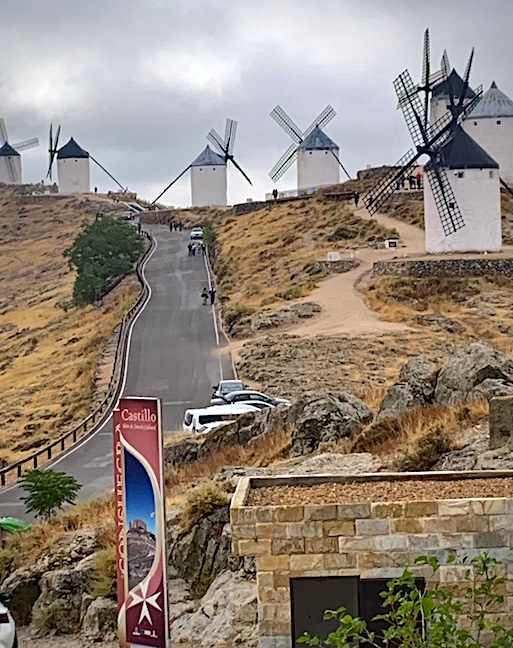
The Consuegra windmills are famous for their role in Miguel de Cervantes’ Don Quixote de La Mancha.
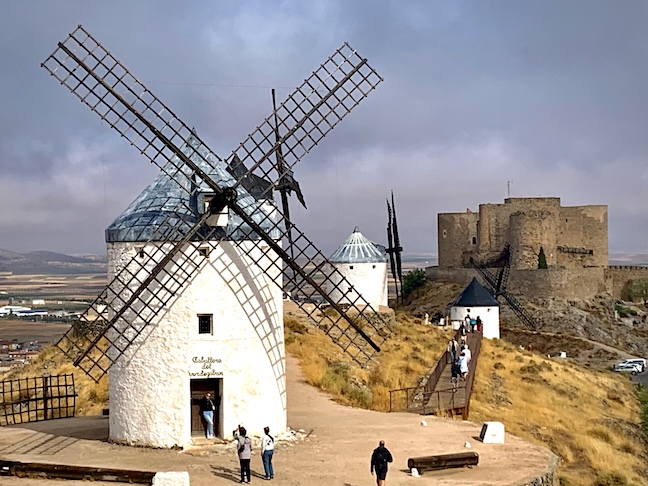
Modeled after 16th-century Dutch windmills, the three-story cylindrical towers were retired from grinding grain in the 1980s. The castle was built in 1183, and expansions were made throughout the 15th century. The fortress became city property in 1962 and was restored to its current condition.
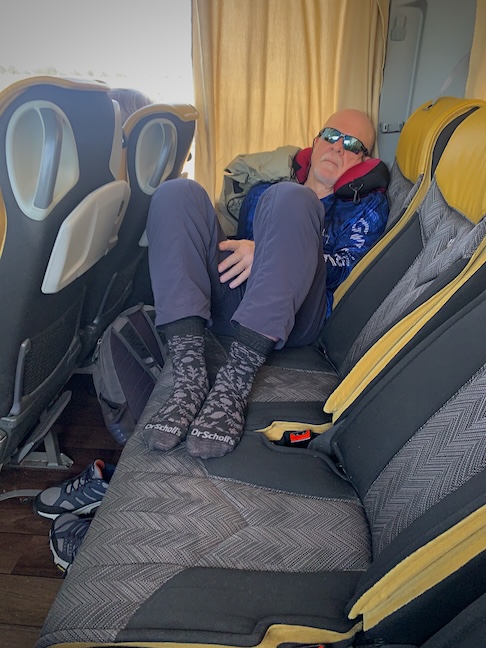
One of the perks of having a 52-seat bus with only 29 passengers is hogging the 5-seat back row for a little snooze on the 5.5-hour trip.
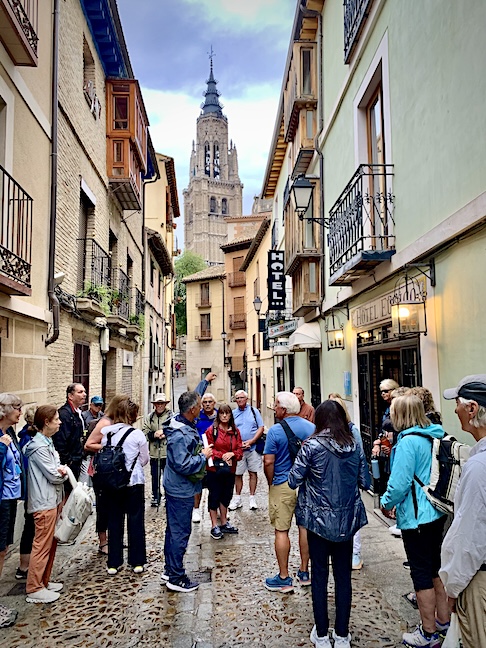
Our home for the night in the historic center of Granada is the boutique Hotel Anacapri, a restored 18th-century house the brochure describes as “contemporary but totally respectful of its origins.”

Every new location begins with an orientation by our guide Agustin Ciriza, where he gives us important tips like directions, how to find and use public transportation, good restaurants, shops, and bathrooms. Here he explains the local custom of a free tapa with every drink you order at the bar.

After a travel day and a bit of Granada exploration, we trudge up Albayzin Hill for a group dinner at Restaurant Las Tomasas, which is a “carmen” or Albayzin walled mansion with terraced gardens on the hillside built long ago by wealthy families. The heart-stopping view of the Alhambra Palace is a teaser for tomorrow’s tour.

